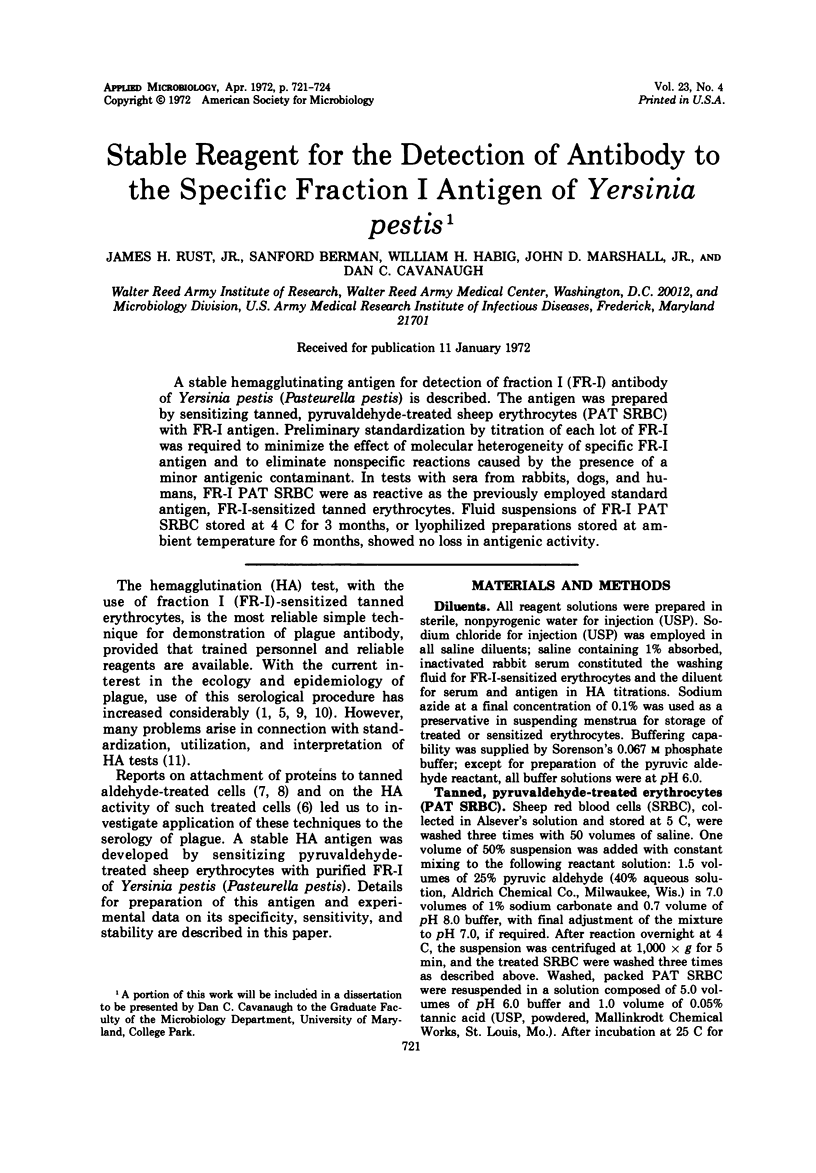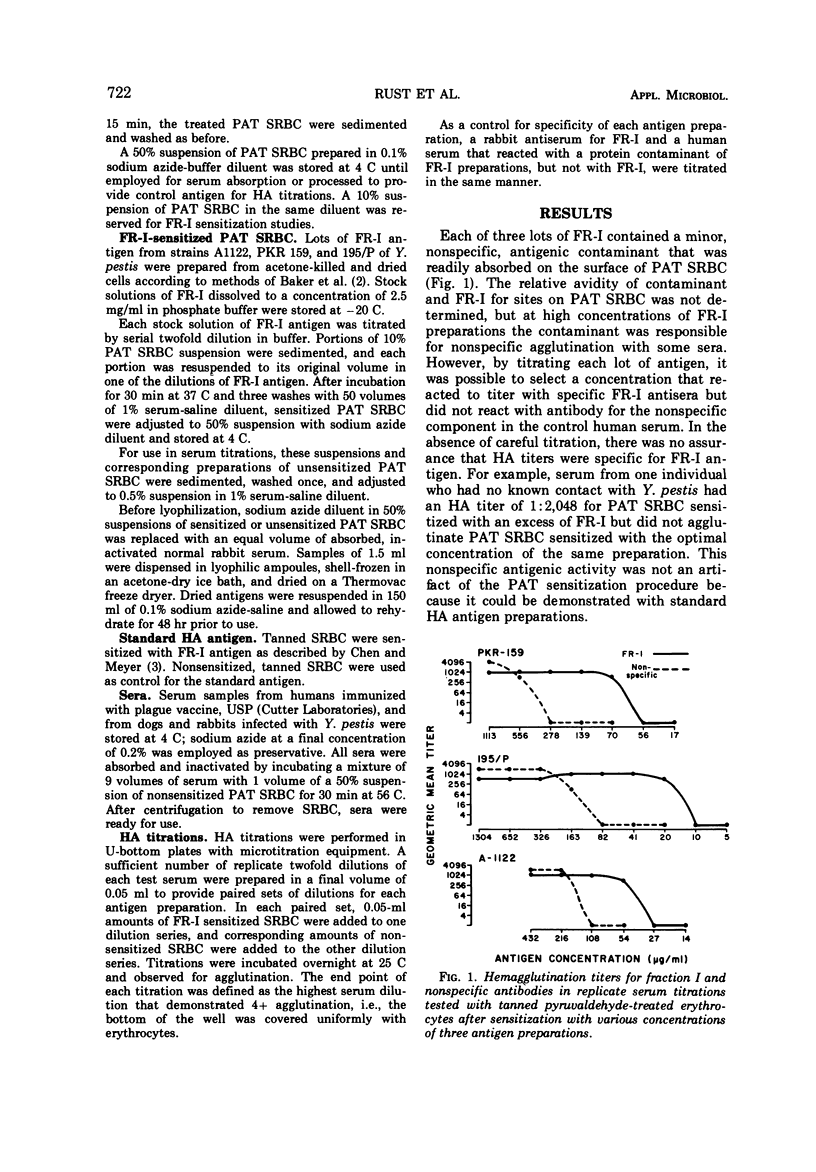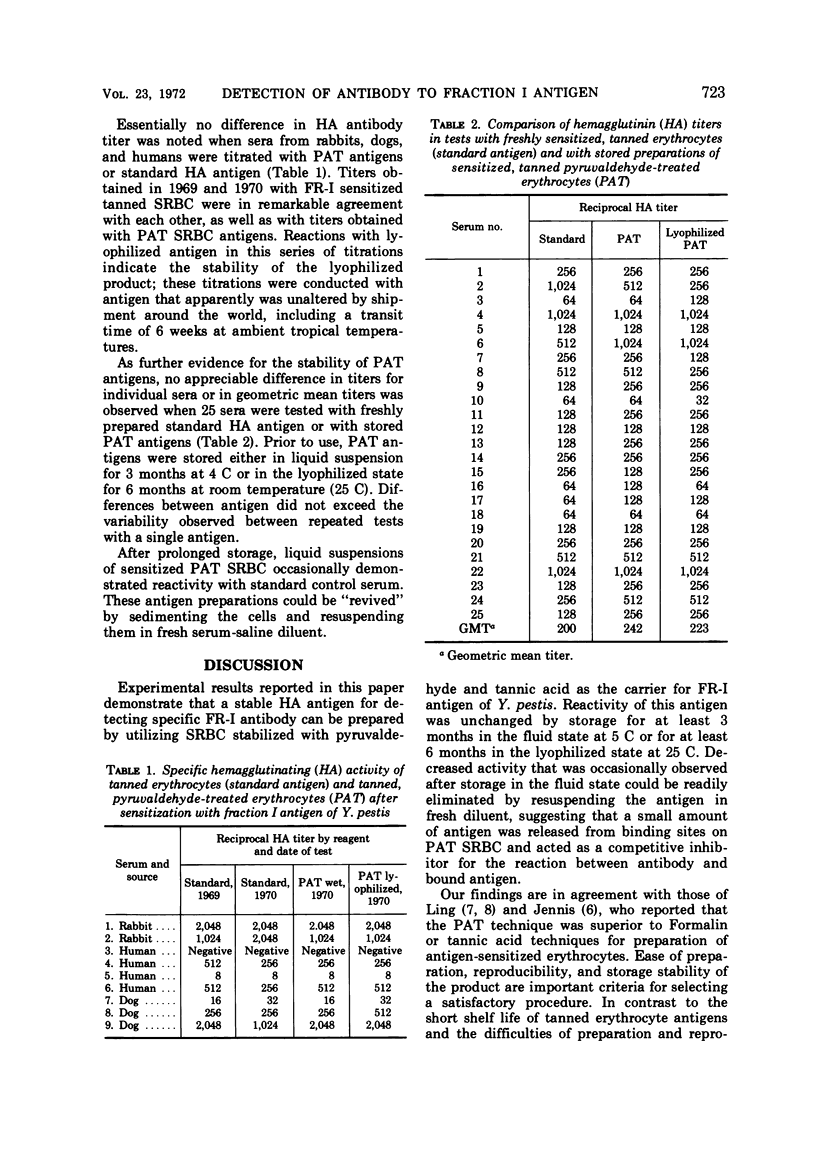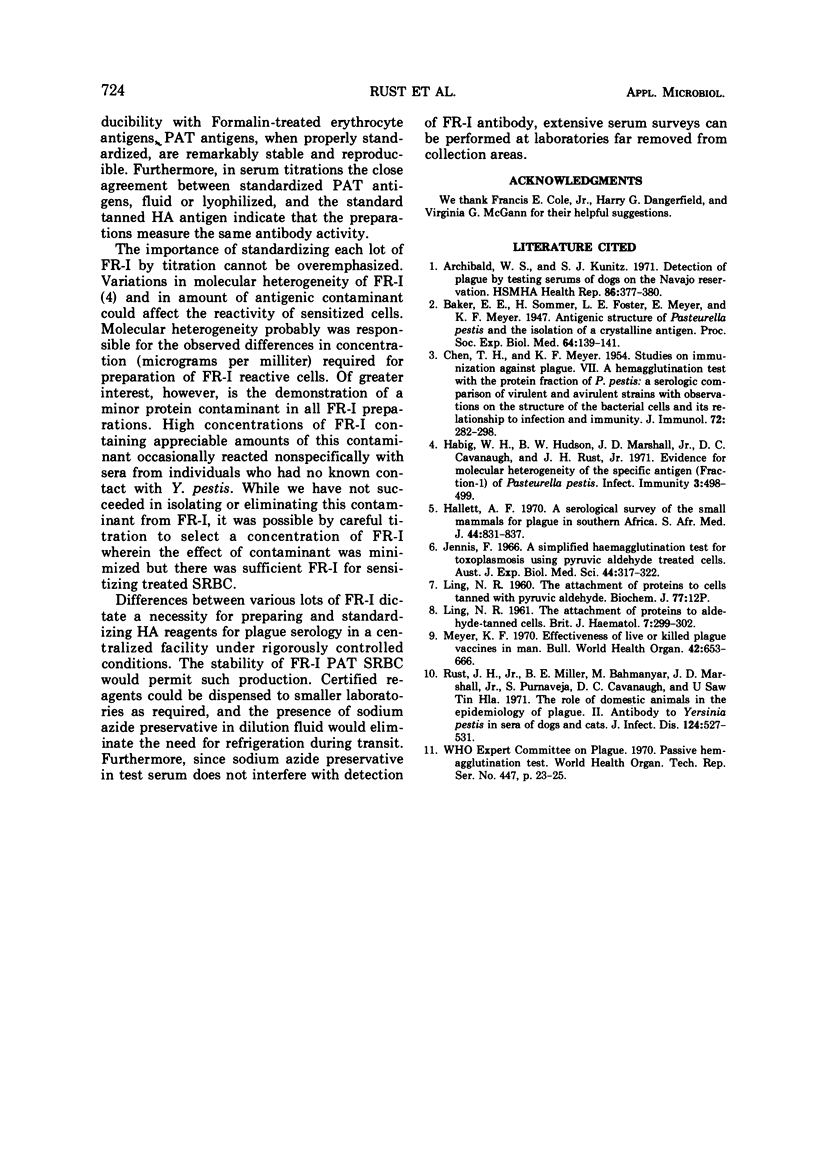Abstract
A stable hemagglutinating antigen for detection of fraction I (FR-I) antibody of Yersinia pestis (Pasteurella pestis) is described. The antigen was prepared by sensitizing tanned, pyruvaldehyde-treated sheep erythrocytes (PAT SRBC) with FR-I antigen. Preliminary standardization by titration of each lot of FR-I was required to minimize the effect of molecular heterogeneity of specific FR-I antigen and to eliminate nonspecific reactions caused by the presence of a minor antigenic contaminant. In tests with sera from rabbits, dogs, and humans, FR-I PAT SRBC were as reactive as the previously employed standard antigen, FR-I-sensitized tanned erythrocytes. Fluid suspensions of FR-I PAT SRBC stored at 4 C for 3 months, or lyophilized preparations stored at ambient temperature for 6 months, showed no loss in antigenic activity.
Full text
PDF



Selected References
These references are in PubMed. This may not be the complete list of references from this article.
- Archibald W. S., Kunitz S. J. Detection of plague by testing serums of dogs on the Navajo Reservation. HSMHA Health Rep. 1971 Apr;86(4):377–380. [PMC free article] [PubMed] [Google Scholar]
- CHEN T. H., MEYER K. F. Studies on immunization against plague. VII. A hemagglutination test with the protein fraction of Pasteurella pestis: a serologic comparison of virulent and avirulent strains with observations on the structure of the bacterial cells and its relationship to infection and immunity. J Immunol. 1954 Apr;72(4):282–298. [PubMed] [Google Scholar]
- Habig W., Hudson B. W., Marshall J. D., Cavanaugh D. C., Rust J. H. Evidence for Molecular Heterogeneity of the Specific Antigen (Fraction-1) of Pasteurella pestis. Infect Immun. 1971 Mar;3(3):498–499. doi: 10.1128/iai.3.3.498-499.1971. [DOI] [PMC free article] [PubMed] [Google Scholar]
- Hallett A. F., McNeill D., Meyer K. F. A serological survey of the small mammals for plague in southern Africa. S Afr Med J. 1970 Jul 18;44(29):831–837. [PubMed] [Google Scholar]
- Jennis F. A simplified haemagglutination test for toxoplasmosis using pyruvic aldehyde treated cells. Aust J Exp Biol Med Sci. 1966 Jun;44(3):317–322. doi: 10.1038/icb.1966.30. [DOI] [PubMed] [Google Scholar]
- KENT L. H., SLADE J. H. Immunochemically-active cross-linked polystyrene preparations. Biochem J. 1960 Oct;77:12–17. doi: 10.1042/bj0770012. [DOI] [PMC free article] [PubMed] [Google Scholar]
- LING N. R. The attachment of proteins to aldehyde-tanned cells. Br J Haematol. 1961 Jul;7:299–302. doi: 10.1111/j.1365-2141.1961.tb00340.x. [DOI] [PubMed] [Google Scholar]
- Meyer K. F. Effectiveness of live or killed plague vaccines in man. Bull World Health Organ. 1970;42(5):653–666. [PMC free article] [PubMed] [Google Scholar]
- Rust J. H., Jr, Miller B. E., Bahmanyar M., Marshall J. D., Jr, Purnaveja S., Cavanaugh D. C., Hla U. S. The role of domestic animals in the epidemiology of plague. II. Antibody to Yersinia pestis in sera of dogs and cats. J Infect Dis. 1971 Nov;124(5):527–531. doi: 10.1093/infdis/124.5.527. [DOI] [PubMed] [Google Scholar]


